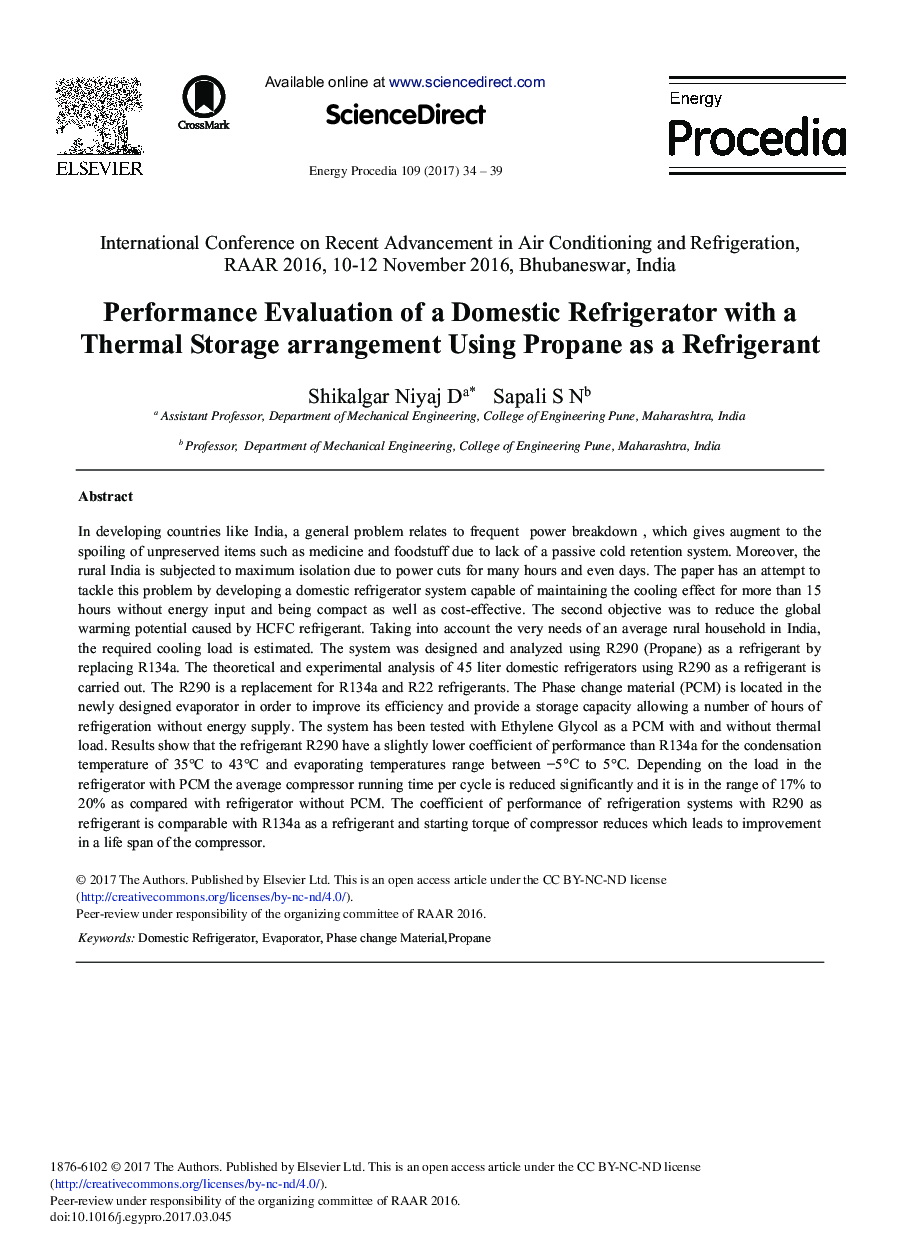| Article ID | Journal | Published Year | Pages | File Type |
|---|---|---|---|---|
| 5445988 | Energy Procedia | 2017 | 6 Pages |
Abstract
In developing countries like India, a general problem relates to frequent power breakdown, which gives augment to the spoiling of unpreserved items such as medicine and foodstuff due to lack of a passive cold retention system. Moreover, the rural India is subjected to maximum isolation due to power cuts for many hours and even days. The paper has an attempt to tackle this problem by developing a domestic refrigerator system capable of maintaining the cooling effect for more than 15 hours without energy input and being compact as well as cost-effective. The second objective was to reduce the global warming potential caused by HCFC refrigerant. Taking into account the very needs of an average rural household in India, the required cooling load is estimated. The system was designed and analyzed using R290 (Propane) as a refrigerant by replacing R134a. The theoretical and experimental analysis of 45 liter domestic refrigerators using R290 as a refrigerant is carried out. The R290 is a replacement for R134a and R22 refrigerants. The Phase change material (PCM) is located in the newly designed evaporator in order to improve its efficiency and provide a storage capacity allowing a number of hours of refrigeration without energy supply. The system has been tested with Ethylene Glycol as a PCM with and without thermal load. Results show that the refrigerant R290 have a slightly lower coefficient of performance than R134a for the condensation temperature of 35 °C to 43 °C and evaporating temperatures range between â5 °C to 5 °C. Depending on the load in the refrigerator with PCM the average compressor running time per cycle is reduced significantly and it is in the range of 17% to 20% as compared with refrigerator without PCM. The coefficient of performance of refrigeration systems with R290 as refrigerant is comparable with R134a as a refrigerant and starting torque of compressor reduces which leads to improvement in a life span of the compressor.
Keywords
Related Topics
Physical Sciences and Engineering
Energy
Energy (General)
Authors
D. Shikalgar Niyaj, S.N. Sapali,
